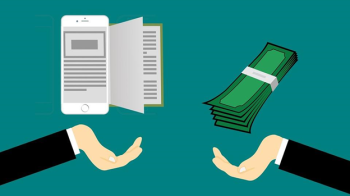Curricular education is a type of instructional method that relies on the teacher to impart knowledge, skills, and abilities to students. In contrast, non-curricular education does not focus on imparting specific knowledge. Instead, it focuses on providing students with opportunities for personal growth and development.
This Video Should Help:
What is curricular education?
Curricular education is defined as the activities that take place inside the classroom which are planned and structured by the school in order to achieve educational objectives. These activities can be divided into two categories: co-curricular and extra-curricular.
What are the benefits of curricular education?
There are many benefits of curricular education. First, curricular activities provide students with opportunities to explore their interests and develop their talents. Second, curricular education helps students learn how to work together cooperatively and solve problems. Third, curricular activities prepare students for the workplace by giving them real-world experience. Finally, curricular education helps students develop self-discipline and time-management skills.
What are the goals of curricular education?
The goal of curricular education is to provide students with the knowledge and skills they need to succeed in life. The curriculum is the set of courses and learning experiences that a school, college, or university offers its students. It includes the school’s or institution’s academic requirements for graduation. A curriculum may also include non-academic activities, such as extracurricular club meetings or sports practices.
What are the methods of curricular education?
There are many different methods of curricular education, but the most common are activities, co-curricular activities, and lesson plans. Each has its own advantages and disadvantages, so it’s important to choose the right one for your needs.
Activities are a great way to get students involved in their learning. They can be used to teach new concepts or review old ones. However, they can also be time-consuming and may not be appropriate for all students.
Co-curricular activities are a great way to keep students engaged in their learning. They can be used to teach new concepts or review old ones. However, they can also be time-consuming and may not be appropriate for all students.
Lesson plans are a great way to get students organized and ready for their learning. They can be used to teach new concepts or review old ones. However, they can also be time-consuming and may not be appropriate for all students.
What are the types of curricular education?
There are many different types of curricular activities that can be found in education. These activities can be grouped into four main categories: academic, enrichement, service learning, and athletics. Each type of activity has its own purpose and benefits.
Academic activities are those that directly support the student’s lesson plan or curriculum. Enrichment activities are designed to supplement and enhance the student’s academic experience. Service learning is a type of experiential education in which students participate in service projects in their community. Athletics are another form of curricular activity that can support the student’s physical development and health.
What is the history of curricular education?
The word ufffdcurriculumufffd is derived from the Latin word for ufffdrace courseufffd or ufffdchariot race.ufffd It first came into use in the 1500s to refer to the courses offered by European universities. The word was eventually used to describe the courses and training that prepare students for a particular profession.
In the early 1900s, educational theorists began using the term ufffdcurriculumufffd to refer to the entire experience that students have in school ufffd all of the activities, lessons, and projects that make up their learning.
Today, the word ufffdcurriculumufffd is used in a variety of ways. It can refer to the courses offered by a school or program, or it can refer to all of the experiences that students have in a school or program. It can also be used more broadly to refer to all of the activities, lessons, and projects that make up a studentufffds learning experience, both in and out of school.
What are the challenges of curricular education?
The challenges of curricular education generally fall into three main categories: activity, definition, and search.
Activity is the level of learning intensity or involvement in an activity. It can be a challenge to keep students engaged in learning activities, especially if the curriculum is not well-designed or if the lesson is not interesting.
Definition refers to the clarity of the objectives and goals of a curriculum. It can be difficult to create a curriculum that is both clear and concise. In addition, it can be challenging to ensure that all students understand the objectives and goals of a lesson or unit.
Search refers to the process of finding appropriate activities and resources to support a curriculum. It can be difficult to find resources that are high-quality and aligned with the objectives and goals of a curriculum. In addition, it can be challenging to find resources that are affordable and accessible for all students.
What is the future of curricular education?
The future of curricular education rests in the ability of educators to integrate co-curricular activities into the curriculum. These activities can range from sports and clubs to service learning and work-based learning experiences. The integration of these activities allows students to gain valuable skills and knowledge that can be applied in the real world.
The future of curricular education also rests in the ability of educators to adapt the curriculum to meet the needs of individual students. This adaptation can take many forms, such as differentiating instruction based on learning styles or providing accommodations for students with special needs. By tailoring the curriculum to meet the needs of each student, educators can ensure that all students have access to a quality education.
What are some examples of curricular education?
There are many different definitions of what curricular education is, but put simply, it is any activity that is designed to promote learning within a lesson or curriculum. This can include everything from textbook work and class discussions to co- curricular activities and search activities.
How can I get involved in curricular education?
There are a few different ways that you can get involved in curricular education. One way is to look for activities that are curriculum based. This means that they are created with the intention of being used as part of a lesson or activity in the classroom. You can often find these by doing a search online or looking in teacher resource books. Another way to get involved is to actually create curriculum-based materials yourself. This could involve creating a lesson plan, worksheet, or other type of activity for use in the classroom. Finally, you can also help shape curricular policy by becoming involved in educational organizations or groups that focus on this issue.
Curricular Education is a term that refers to the learning opportunities, activities, and experiences that are part of a course of study. These can range from traditional in-classroom instruction to online courses, extracurricular activities, and more. Some examples of Curricular Education include: Reference: what are some skills many ctsos help their members develop?.
External References-
https://quizlet.com/439648547/career-and-technical-student-organizations-flash-cards/







